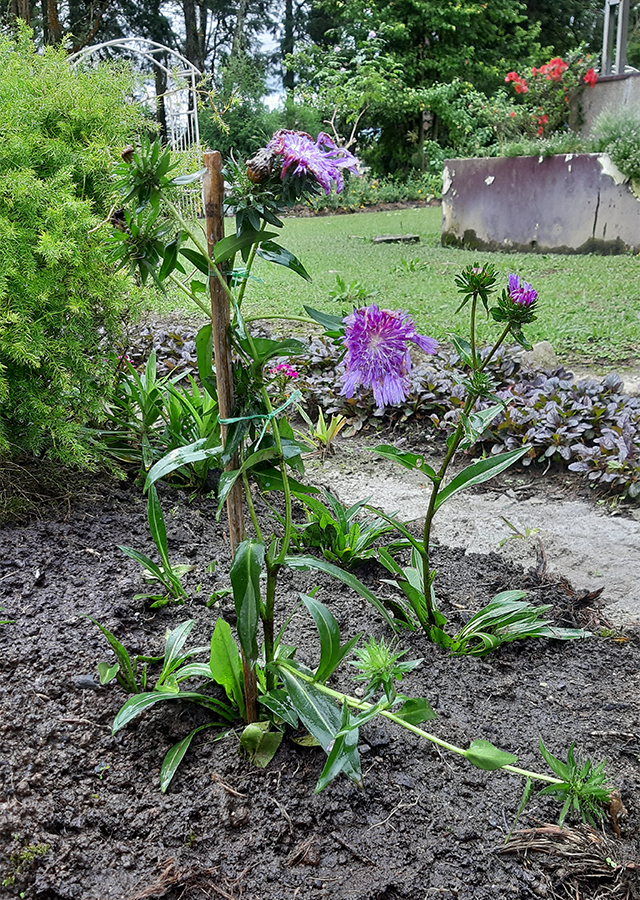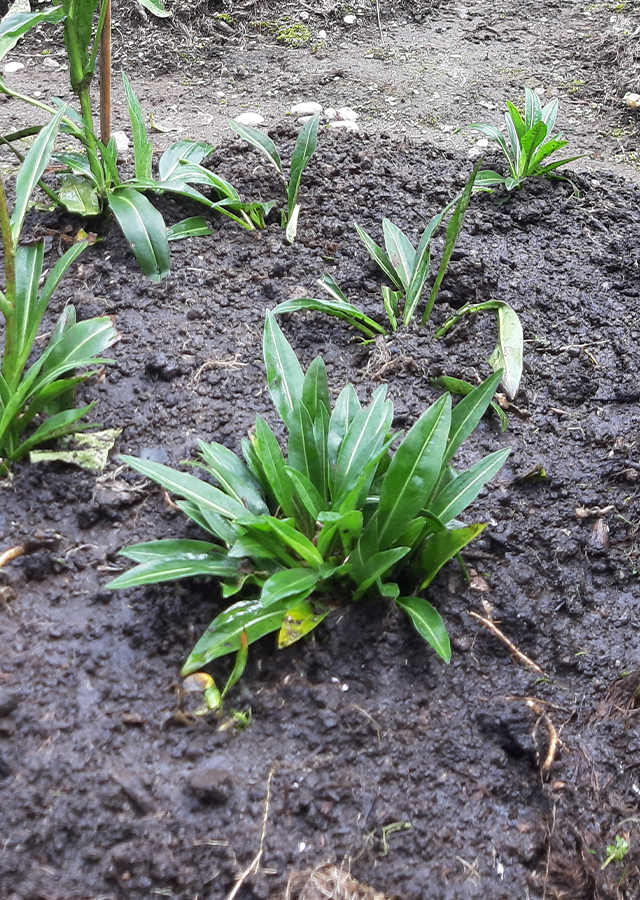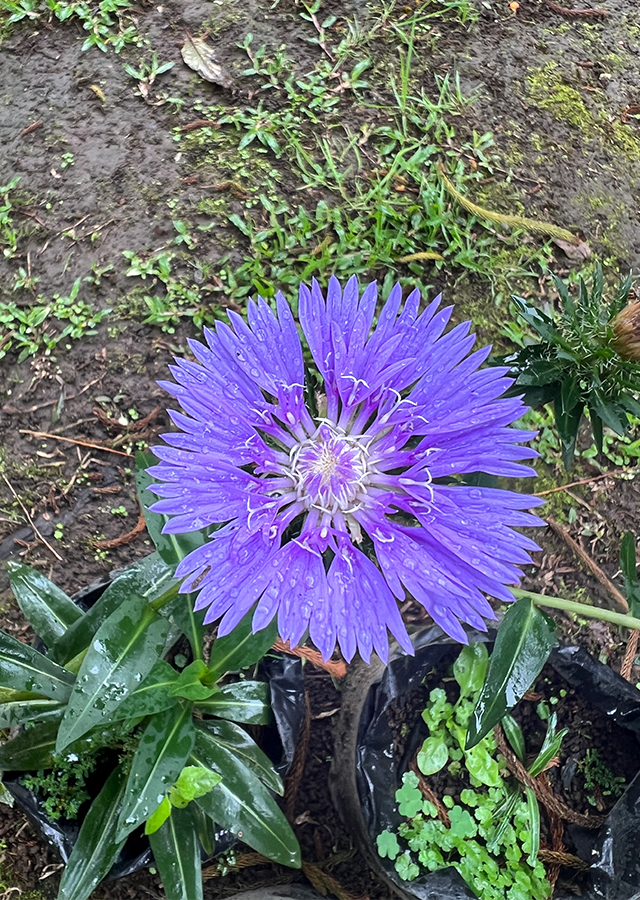Traditional Herbs from Centaurea cyanus
speed_healing_of_wounds_or_bleeding_gums
- Take cornflower flowers, wash them thoroughly.
- Brew them with boiling water.
- Strain then drink.
What is Centaurea cyanus Looks like??



Parts of Centaurea cyanus that could be used
- Leaves
- Seeds
- Flowers
Centaurea cyanus Distribution
Cornflower or Centaurea cyanus is a flowering plant originating from Asia (Iran, Iraq, Pakistan and Turkey) and Southern Europe (Albania, Bosnia, Bulgaria, Croatia, Italy, Macedonia, Serbia and Slovenia). The scientific name of the genus Centaurea comes from the story of the centaur Chiron, Achilles' advisor. According to Greek myth, Achilles was wounded by a poisoned arrow (by Heracles), and his wound was healed by applying the flower. Cornflower is one of the national flowers of Germany and Estonia. It grows as a wild plant, but because of the beautiful color and shape of its flowers, this plant is widely used en masse as an ornamental plant and cut flower. The flowers can also be enjoyed as a herbal tea. Apart from that, Centaurea cyanus is also widely used in traditional medicine and is still a herbal product that fills herbal shops, especially in the ophthalmic sector. Recent studies show that this plant is a valuable source of various secondary metabolites used as medicines, agricultural chemicals, flavors, fragrances, dyes, pesticides and food additives.Agroecology of Centaurea cyanus
Centaurea cyanus is found growing at altitudes ranging from sea level to 2,500 m above sea level, both on empty land and in uncultivated fields, especially in wheat fields which are currently almost lost due to massive use of herbicides, and is also found growing along roads and railways. Cornflower is very adaptable and will tolerate poor soil and no fertilization, and is able to tolerate low water conditions but prefers moderate moisture, and well-drained soil. Optimal growth prefers a position in full sun in any soil, but prefers neutral or alkaline sandy soil. The stems will fall if there is too much shade.
Morphology of Centaurea cyanus
- The stem is slender and thin, hollow, angular, erect, slightly tomentose, grayish green.
- Leaves are lanceolate, arranged alternately (alternate), the lower leaves are lyrate-pinnatifid and the upper leaves are narrowly lanceolate or linear, covered with short, greyish hairs.
- The flowers are blue to purple, pink to red, or cream to white. The inflorescence head is ovate, 3 cm in diameter, formed by clusters of flowers sessile (without penducle), spirally inserted on a rounded base. The base of the flower (receptacle) is surrounded by an involucrum, about 15 mm high and 6-10 mm wide, formed by imbricated bracts with brown edges. called ray florets, are 20-25 mm long and have a crown formed by five corollas (petals) fused together that extend sideways in a radial direction, with the apex divided into Lanceolate lobes. The corolla is usually dark blue, but can have different shades, from white to purple, to blue. The fertile flowers, called disc flowers, are inside this ring and are 10-15 mm long, with purple symmetrical tubular corollas with five short lobes.
- Fruits contain only one seed and are called achenes, ranging in color from yellowish brown to blackish , surmounted by the pappus, a modified flower calyx, formed by a corolla of stiff orange-brown feathers, which serves to aid its spread.
Cultivation of Centaurea cyanus
- Plant propagation is via seeds which can be placed directly in the soil (in spring).
- Flowering begins after 5-6 weeks.
Centaurea cyanus, more details :
Chemical Content of Centaurea cyanusFlavonoid aglycons (quercetin, kaempferol, isorhamnetic, apigenin, luteolin, hispidulin), and their glycosides, caffeic, chlorogenic, neochlorogenic, isochlorogenic acids, amino acids, phenolic compounds (flavonoids, anthocyanins, and tannins), aromatic acids (chlorogenic acids, -hydroxibenzoic, p-coumaric, vanilic, syringic,� ferulic, salicylic and benzoic acids), indole alkaloids, coumarins (scopoletin, umbelliferone).
Benefits of Centaurea cyanus
Treats eye inflammation, relieves eye tension and swollen eyes, soothes nervous disorders, improves digestion, accelerates healing of wounds or bleeding gums, cleanses dry sensitive facial skin, laxative for children, anti-rheumatism.
Simplisia of Centaurea cyanus
- Prepare the cornflower flowers, wash thoroughly with running water then drain.
- Dry in the sun or in an oven at a temperature\u00a040\u00b0C\u00a0until the water content\u00a010%.
- Store in a clean and airtight place." ]
Another Facts for Centaurea cyanus :
Synonym of Centaurea cyanus
Centaurea segetalis Salisb., Cyanus segetum Hill, Centaurea cyanocephala Velen.
Habitus of Centaurea cyanus
Herb. Semusin herb (annual), grows to a height of around 20-90 cm
Habitat of Centaurea cyanus
- Roadside
- Land
No comments:
Post a Comment